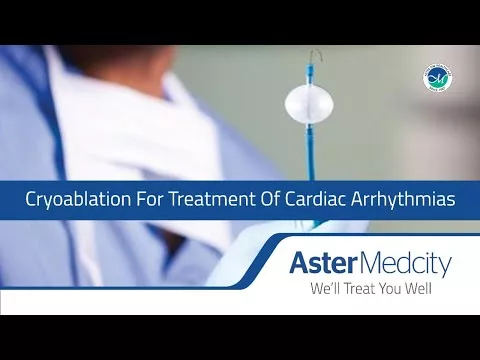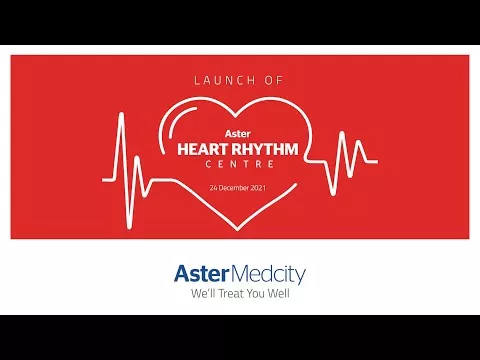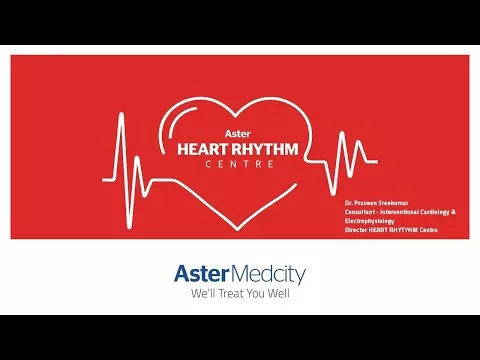What is Radio Frequency Ablation (RFA) for arrhythmias?
Radiofrequency ablation (RFA) is a medical procedure used to treat certain types of cardiac arrhythmias, which are abnormal heart rhythms. It is a minimally invasive technique that involves the use of heat generated by radiofrequency energy to selectively destroy or modify specific areas of heart tissue responsible for causing the arrhythmia. During the procedure, a thin, flexible catheter is inserted into a blood vessel (usually through the groin) and threaded up to the heart. The catheter contains a small electrode at its tip, which emits high-frequency radiofrequency energy. The catheter is guided to the precise location in the heart where the abnormal electrical pathways or cells are located.
Once the catheter is in position, the radiofrequency energy is delivered to the targeted area, creating a controlled thermal lesion. The heat destroys the abnormal heart tissue or creates scar tissue, which interrupts or blocks the abnormal electrical signals causing the arrhythmia. This helps restore normal electrical conduction in the heart and corrects the rhythm disturbance.
Radiofrequency ablation is commonly used to treat different types of arrhythmias, including supraventricular tachycardias (SVTs) such as atrioventricular nodal reentrant tachycardia (AVNRT) and atrioventricular reentrant tachycardia (AVRT), as well as some ventricular arrhythmias. It is an effective treatment option with a high success rate and low complication rates. However, the specific suitability of RFA depends on the individual patient's condition and the type of arrhythmia they have.
It's important to note that the procedure should be performed by a skilled electrophysiologist, a cardiologist specialized in the diagnosis and treatment of heart rhythm disorders.
Why and when RFA for arrhythmias recommended?
Radiofrequency ablation (RFA) for arrhythmias may be recommended for several reasons and in various situations. Here are some common scenarios where RFA is considered:
- Symptomatic arrhythmias: If a person experiences frequent or severe symptoms related to their arrhythmia, such as palpitations, dizziness, chest discomfort, or fainting spells, RFA may be recommended. The procedure aims to eliminate or significantly reduce these symptoms by restoring normal heart rhythm.
- Ineffectiveness of medication: Some arrhythmias may not respond well to medications or may require high doses that can cause side effects. RFA can be an alternative or adjunctive treatment when medications fail to control arrhythmia adequately.
- Recurrent arrhythmias: If a person has recurrent episodes of arrhythmia despite appropriate medical therapy, RFA may be considered. The procedure aims to eliminate the abnormal electrical pathways or cells responsible for the arrhythmia, reducing the likelihood of recurrence.
- Specific types of arrhythmias: RFA is particularly effective for certain types of arrhythmias. For example, supraventricular tachycardias (SVTs) such as atrioventricular nodal reentrant tachycardia (AVNRT) and atrioventricular reentrant tachycardia (AVRT) are commonly treated with RFA. Ventricular arrhythmias arising from specific locations in the heart may also be amenable to RFA.Quality of life improvement: RFA can significantly improve a person's quality of life by eliminating or reducing arrhythmia-related symptoms. It may be recommended for individuals who have a high symptom burden and wish to improve their overall well-being.
How does RFA differ from other treatment options for arrhythmias?
Radiofrequency ablation (RFA) for arrhythmias differs from other treatment options in several ways. Here are some key distinctions:
- Medications: Medications are commonly used to manage arrhythmias. However, they primarily aim to control the heart rhythm rather than provide a cure. Medications can help alleviate symptoms and reduce the frequency or severity of arrhythmia episodes. In contrast, RFA is a curative treatment that targets the underlying cause of arrhythmia by ablating or modifying the abnormal heart tissue responsible for generating the abnormal electrical signals.
- Cardioversion: Cardioversion is a procedure that involves delivering an electric shock to the heart to restore normal rhythm in cases of certain arrhythmias, particularly atrial fibrillation. It can be done using external paddles or through an internal device (implantable cardioverter-defibrillator). Cardioversion is effective for acute rhythm control but may not prevent future recurrences. RFA, on the other hand, addresses the source of the arrhythmia, aiming for a long-term solution.
- Implantable devices: In some cases, implantable devices such as pacemakers or implantable cardioverter-defibrillators (ICDs) may be used to manage arrhythmias. Pacemakers help regulate heart rhythm and pacing, while ICDs monitor and treat potentially life-threatening arrhythmias. These devices are typically used for specific types of arrhythmias or as a preventive measure in individuals at high risk. RFA, however, focuses on treating the underlying abnormal tissue causing the arrhythmia, aiming for a cure rather than relying on ongoing device therapy.
- Surgical options: In certain situations, surgical procedures may be considered for arrhythmia treatment. Surgical ablation involves creating lesions on the heart using various energy sources, such as radiofrequency or cryotherapy, to disrupt abnormal electrical pathways. Unlike RFA, which is minimally invasive and performed through catheterization, surgical ablation requires open-heart surgery.
It's important to consult with a cardiac electrophysiologist to determine the most appropriate treatment approach for your specific arrhythmia, considering factors such as the type of arrhythmia, symptom severity, medical history, and individual considerations.
How is life after RFA for arrhythmias?
Life after radiofrequency ablation (RFA) for arrhythmias can vary depending on several factors, including the specific type of arrhythmia, the success of the procedure, and individual circumstances. Here are some general considerations:
- Symptom improvement: In many cases, RFA successfully eliminates or significantly reduces arrhythmia-related symptoms. This can lead to an improved quality of life, as symptoms such as palpitations, dizziness, and shortness of breath are alleviated. Individuals often report feeling more energetic, having better exercise tolerance, and experiencing an overall sense of well-being.
- Reduced recurrence of arrhythmias: RFA aims to treat the underlying cause of the arrhythmia, targeting and ablating the abnormal heart tissue responsible for generating the arrhythmia. When successful, the procedure can significantly reduce the likelihood of arrhythmia recurrence.
- Recovery period: After RFA, there is typically a recovery period during which the heart tissue heals. The length of the recovery period can vary, but most individuals are able to resume their normal activities within a few days to a week.
- Follow-up care: Regular follow-up appointments with your healthcare provider, typically an electrophysiologist, are important after RFA. These appointments allow for monitoring of your heart rhythm and overall progress. Follow-up electrocardiograms (ECGs) or other tests may be conducted to assess the success of the procedure and ensure that the arrhythmia has been effectively treated.
FAQs
At Aster Hospitals we provide the highest quality of care and a transformative experience for all your healthcare needs. With our network of multi-speciality hospitals, specialised doctors, and world-class technology, we bring global standards of medical care to our patients.
How is radiofrequency ablation performed?
During the procedure, thin, flexible catheters are inserted through a blood vessel (typically in the groin) and guided to the heart. The catheter has a special tip with an electrode that delivers controlled radiofrequency energy to the targeted heart tissue. The energy creates heat, which destroys the tissue responsible for the arrhythmia. The procedure is guided by real-time imaging techniques such as fluoroscopy or three-dimensional mapping systems.
Is radiofrequency ablation painful?
Patients are usually given local anesthesia and conscious sedation or general anesthesia to ensure comfort during the procedure. While the ablation itself is typically not painful, some patients may experience mild discomfort or a sensation of pressure when the catheter is positioned in the heart.
Blogs
The source of trustworthy health and medical information. Through this section, we provide research-based health information, and all that is happening in Aster Hospital.








